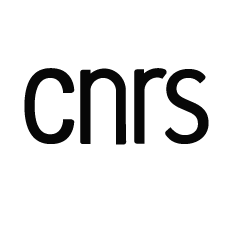Other equipments
Elemental analysis makes it possible to determine the quantities of carbon (C), hydrogen (H), nitrogen (N) and sulfur (S) present in a solid organic sample (polymer, pur synthesis products, biomass …).
As the sample burns, it generates uniform gaseous compounds of elements C, H, N and S. These combustion products (e.g. CO2, H2O, NO2, etc.) are measured by gas chromatography to determine the element content in the starting sample. The C, H, N and S contents are determined simultaneously.
To analyze organic elements, relatively small samples are required. The quantities of each element are indicated as a percentage of the starting sample weight, determined with a high precision microbalance.
Equipements : Vario Cube Elementar ; Microbalance Mettler Toledo
Solid sample free of solvents
Request for analysis to be submitted with the samples (form on request)
Contact :
Karl Fisher is a precise method for determining water content. It is based on the oxidation of sulphur dioxide in the presence of water. This reaction is reversible. To favour the direction of the reaction, imidazole is added to react with the acidity formed by the first reaction. The coulometric method is used to determine low water contents in a liquid (from a few ppm to 0.5% in the sample analysed).
In the coulometric technique, the sample is dissolved in a methanol-imidazole solution. The titration cell has three electrodes. Under voltage, the anode generates iodine, while at the cathode hydrogen is converted into dihydrogen. The third electrode is used to determine the titration point using amperometry. It is the amount of electricity required to transform the water into a non-conductive compound that make it possible to determine the water content.
Equipement : 831 KF Coulometre Methrom
Liquid sample not containing any aldehydes or ketones
Request for analysis to be submitted with the samples
Contact :
![[Translate to English:] Appareil RMN](/fileadmin/_processed_/0/0/csm_RMN_Artois_9462e81150.png)
Nuclear Magnetic Resonance (NMR) spectroscopy is a non-destructive analytical technique for determining molecular structure and dynamics. Applications in liquid NMR range from the structural determination of small molecules in solution, natural or synthetic substances, to the study of macromolecules (proteins, polysaccharides, polymers...) and their interactions. This technique is based on the magnetic properties of certain atomic nuclei with a nuclear spin. Indeed, when placed in an intense magnetic field, the atomic nucleus acquires a nuclear magnetization which is detected by its resonance with a secondary electromagnetic field. The energy involved in this resonance phenomenon corresponds to a precise frequency that depends on the intensity of the applied magnetic field, the electronic environment of the nuclei and the dynamics of the atomic movements.
The UCCS laboratory is equipped with an AVANCE NEO 400 MHz (9.4 Teslas) liquid NMR spectrometer with a sample changer. It is used on a daily basis by researchers and doctoral/post-doctoral students to monitor syntheses, to characterise molecular chemistry or to carry out more complex NMR studies. With free access, trained users can run routine experiments. The 24-position autosampler allows high throughput of NMR spectra during the day (8am-6pm; short analysis < 30 minutes) as well as at night (6pm-8am; longer analysis > 30 minutes) in automatic mode for one- and/or two-dimensional experiments mainly for the following nuclei: 1H, 2H, 11B, 13C, 15N, 19F, 31P... (other nuclei on request).
Applications in the laboratory are mainly related to molecular receptors for organometallic catalysis, supramolecular self-assemblies for catalysis, materials and nanoparticles for heterogeneous catalysis.
The NMR service is also used for teaching and training, mainly in the fields of chemistry, but is also open to external academic researchers and industry through collaborations, partnerships or services.
Possibility to come with the prepared samples or to prepare them on site
Possibility to send raw or interpreted data
Model: AVANCE NEO Nanobay 400 MHz NMR Spectrometer
• Bruker ASCEND 400MHz SB magnet
• AVANCE NEO Nanobay console
• Control and processing: Topspin 4 and IconNMR
• iProbe DR BBFO BBF/H 5 mm (dual resonance probe, 1H, 13C, 31P, 11B,... and 19F, with automatic probe tuning + gradients)
• Low temperature down to - 150° C
• SampleCase 24 positions
• Bruker Cooling Unit: Low temperature down to - 50° C
Contact :
![[Translate to English:] Photo Laser pulsé 1](/fileadmin/_processed_/3/9/csm_Laser_pulse_1_6288d6f5d5.jpg)
![[Translate to English:] Photo laser pulsé 2](/fileadmin/_processed_/c/8/csm_Laser_pulse_2_582461585e.jpg)
Pulsed Laser Deposition (PLD) is a high-performance technique for producing thin films with remarkable properties.
The deposition of thin films by PLD is based on the interaction between the material and a pulsed laser beam (nanosecond pulse duration) focused on the target material to be deposited. During the process generated by laser irradiation of a target, ejected particles initially remain confined close to the surface of the target in a layer called the Knudsen layer. It has the same dimensions as the laser spot (generally rectangular with a surface area of 1 to 2 mm2). This layer is mainly made up of ions and electrons, but also contains neutral atoms, diatomic particles and droplets of molten material. This layer has a high particle density (1019-1020 particles.cm-3), which encourages collisions between the different particles and leads to a rise in temperature in the target material. However, the strong collisions but also the absorption of the laser beam generate an ionisation phenomenon in the Knudsen layer: the energy hν of the photons allowing the ionisation of the neutral atoms and creating a significant increase in the number of electrons in the Knudsen layer. The result is the formation of a plasma known as plume. The films characteristics, such as thickness, crystallisation and composition homogeneity, depend on particules state in the plasma prior to impact on the substrate (excited state, kinetic energy, spatial composition of the plasma, etc.) and on the substrate used (temperature, composition of the substrate, crystallisation of the substrate, ...). Several parameters can therefore influence deposition: laser energy, impulsion frequency, presence or absence of residual gas in the chamber, substrate temperature, target-substrate distance. The decreasing temperature ramps after deposition are also crucial for obtention of well-crystallised deposits.
Pulsed laser deposition can be used to deposit materials with remarkable properties: superconductors, ferroelectrics, ferromagnetics, multiferroics, etc.
UCCS has a PLD chamber equipped with a KrF excimer laser at 248 nm.
Contact :

